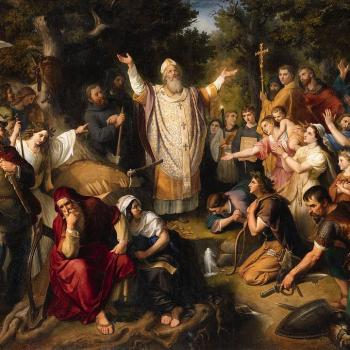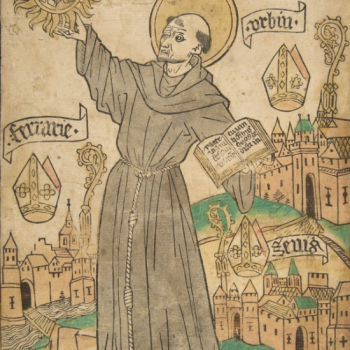There are few concepts in Christianity as mind-bendingly-difficult to understand as the Trinity. It’s widely considered to be one of the foundational beliefs of the Christian religion but the word “trinity” is never mentioned even once in the Bible. SO WHAT’S THE DEAL?
What is it?
The Trinity is the doctrine that God in God’s nature is made up of three hypostosis (which is a fancy Greek word which means that what is referred to is a not an attribute, like goodness or purpleness but is the thing itself.) Christians believe that the three hypostosis are revealed to humans as the Father, the Son (Jesus), and the Holy Spirit.
Where does it come from?
The origins of the Trinity, as a theological term, are rooted in the Church’s struggle to understand Jesus. Christians believe that Jesus is God’s greatest revelation of God’s own self. Jesus, more then the Bible and more then any prophets who had come before, was believed to have revealed God in himself. Jesus was God written in human flesh (the universal language of all people). BUT how could God be both GOD and MAN. A robust theology of the divine was required. Jesus was God, but he also seemed to be in relationship to God as well. How could someone be Both Gad and in relationship with God?
The answer is: THE TRINITY!
The answer is: THE TRINITY!
How can you understand it?
The honest truth is you’re not supposed to. One of the hallmarks of good Christian theology surrounding God is that it is somewhat unresolved. God is kind of like poetry or music. The beauty come out in the tension between notes and words rather then in the words or notes by themselves. God is the same way. Ideas about God held in tension can often give expression to who God is more then the word by themselves ever could.
Ok, but what are some ways that I can start to talk about it?
There have been two basic ways people have tried to approach the trinity. The first way focuses on how the threeness can be oneness and the other way focuses on how the oneness can be threeness.
1 to 3
If you’re going to try to focus on how the oneness can be threeness one of the best ways to look at it is through an individual. There are parts of a person that seem distinct from other parts. For example my mind seems to be in someways distinct from my body, which is in turn somewhat distinct from my spirit. Mind, body and spirit are all distinct ways of approaching a single human being. Three in one!
Another way you could look at the ways that we all embody different roles, often simultaneously. I remember when my son was born I would often find myself cooking dinner while simultaneously watching my son as he was napping in a chair by my side, while I was doing both of these things I was also listening to a book on tape. In this moment I was a chef, a father, and a student. Three roles in one human being!
3 to 1
On the other hand, if you want to focus on the oneness through the threeness there one of the best ways to look at the trinity is through the lens of a community, family, or household. My family is made up of myself, my wife and my son. There are three of us, but we are all one family. This perspective helps underscore an important aspect of Christian theology.
Christians believe that God is love, and not just any love, the kind of love that gives to others and puts others before ones own self. For God to be described as an eternal being of love it hard to understand how that kind of Love could exist without relationship. The Trinity shows us God as a community of love. The eternal love of God is not an inward pointing love of narcissism but rather out outpouring love of a perfect community. I find this image very helpful.
A couple other images
The trinity has been described in many ways, but 2 images resonate powerfully to me. One is of a father reaching out to pick up a child. In many ways the Jesus and the Holy Spirit are the two arms with which God reaches out and grabs us.
Another image I really like is the image of a heart. A heart pumps out blood into the body, but as it pumps it also receives blood back.This describes the love of God pretty well. Always being sent out and always returning.













